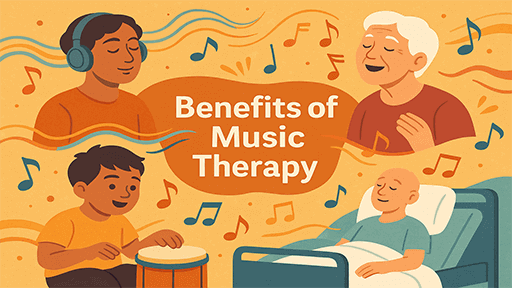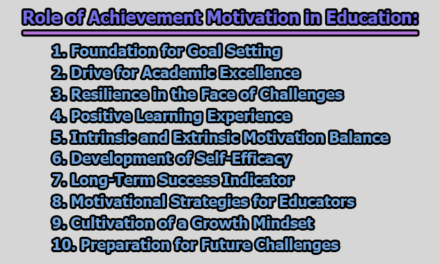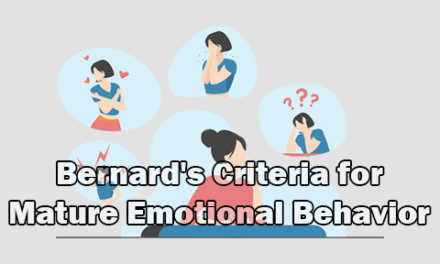Benefits of Music Therapy:
Music has long been more than just entertainment—it is a powerful force that shapes our emotions, connects us to our memories, and provides comfort during life’s challenges. Across cultures and generations, people have turned to music for solace, inspiration, and healing, a practice supported by both tradition and science (Solanki et al., 2013). Beyond its cultural and personal significance, recent studies highlight its therapeutic role in promoting mental well-being, easing distress, and alleviating symptoms of conditions such as depression and anxiety (Silverman, 2022). In this article, we will explore the vital benefits of music therapy, examining how it is applied in different contexts and why it continues to be such an essential tool for emotional and psychological health.
14 Proven Benefits of Music Therapy:
Music has always played an important role in human life. Across cultures and throughout history, it has provided people with comfort during hardship, strength in times of struggle, and joy during celebration (Solanki et al., 2013). What was once considered a purely artistic or cultural practice is now increasingly recognized as a therapeutic tool. In recent decades, extensive research has highlighted its effectiveness in supporting both mental and physical health, offering tangible benefits that complement traditional therapies (Solanki et al., 2013; Silverman, 2022). Below are 14 evidence-based benefits of music therapy, with real-world applications and examples.
- Reducing Symptoms of Psychosis, Depression, Anxiety, Stress, and Schizophrenia-like Disorders: Music can act as a stabilizing force for individuals experiencing severe mental health conditions. For example, guided drumming sessions or calming instrumental tracks have been shown to reduce agitation in patients with schizophrenia. Similarly, individuals battling depression often find that songwriting or lyric analysis provides a safe outlet for expressing painful emotions, which reduces feelings of isolation.
- Enhancing Social Functioning: Music therapy often takes place in group settings where participants play instruments, sing, or move to music together. These shared experiences foster cooperation and strengthen social bonds. For instance, children with autism spectrum disorder may learn important communication skills during music-based group activities, helping them engage more effectively with peers.
- Positively Impacting Treatment Readiness and Motivation: Because music is inherently enjoyable, it can help patients who feel resistant to traditional therapies. For example, a teenager reluctant to engage in talk therapy may respond more openly when encouraged to share and discuss meaningful songs. This shift creates a sense of readiness, increasing motivation to participate in their broader treatment plan.
- Reducing Craving Intensity and Volume in Substance Use Interventions: Music therapy has been particularly valuable in addiction recovery programs. Listening to carefully selected songs or engaging in improvisation can redirect focus away from cravings and provide healthier coping strategies. In group rehab settings, creating playlists that represent “life before and after recovery” often helps individuals process their experiences and reduce the intensity of urges.
- Lowering Resistance to Mental Health Treatment: Unlike some medical or psychological interventions that may feel intimidating or clinical, music therapy feels familiar, natural, and safe. Patients who might resist psychotherapy often find themselves more willing to participate in music-based interventions. For instance, elderly individuals who reject talk therapy sometimes welcome music therapy sessions, where familiar songs from their youth gently open up emotional discussions.
- Improving Coping Skills: Music gives individuals tools for managing emotional ups and downs. For example, cancer patients undergoing chemotherapy often use personalized playlists to distract from treatment discomfort while simultaneously reinforcing inner strength. Similarly, individuals struggling with grief may find solace in writing songs that articulate their loss, helping them navigate painful emotions.
- Offering Emotional Relief by Inspiring Hope and Optimism: Uplifting melodies and lyrics can spark feelings of hope, even in bleak circumstances. Patients in hospital wards often report that listening to their favorite music helps them feel more optimistic about recovery. A notable example is hospice patients who find comfort in live music therapy sessions, where songs chosen with their input provide dignity, peace, and emotional relief.
- Boosting Memory, Attention, and Cognitive Functioning: Music therapy is widely used with individuals experiencing cognitive decline. Patients with dementia, for example, may struggle to recall everyday details but can effortlessly sing along to songs from their youth. This phenomenon not only enhances memory recall but also strengthens attention and cognitive engagement during sessions.
- Promoting Relaxation and Reducing Stress-Related Hormones: Slow, rhythmic music has been found to lower heart rate and reduce levels of cortisol, the body’s main stress hormone. Hospital settings often integrate music therapy before and after surgical procedures to calm patients. Similarly, mindfulness practices combined with soft background music help individuals unwind after long, stressful days.
- Offering Pain Relief for Acute and Chronic Conditions: Pain perception is not purely physical—it is also influenced by attention and emotion. Music therapy distracts the mind and induces relaxation, thereby reducing discomfort. For example, mothers in labor frequently benefit from soothing playlists, while individuals with chronic pain conditions such as fibromyalgia report reduced pain intensity when engaging in guided music therapy sessions.
- Encouraging Social Interaction and Group Cohesion: From drum circles to choir participation, music therapy fosters unity. Veterans suffering from post-traumatic stress disorder (PTSD) often benefit from group songwriting sessions, which promote trust and collective healing. These shared musical experiences build camaraderie and reduce feelings of isolation.
- Supporting Other Therapeutic and Rehabilitation Techniques: Music therapy is often integrated with other treatments, making rehabilitation more engaging and effective. For example, stroke survivors use rhythm-based exercises to retrain motor movements. By clapping or moving in time with music, patients relearn motor coordination more effectively than with traditional physical therapy alone.
- Reducing Distress and Challenging Behavior in Patients with Alzheimer’s Disease: Music therapy provides a nonverbal way to connect with individuals experiencing advanced Alzheimer’s. Familiar tunes often calm agitation and spark moments of clarity. Care facilities regularly use structured music programs to reduce wandering, aggression, and confusion in residents.
- Improving Sleep Quality: Gentle, slow-tempo music has been proven to aid relaxation before bedtime, leading to better sleep patterns. Patients with insomnia often benefit from structured bedtime music routines. For example, guided relaxation with calming instrumental tracks helps individuals fall asleep more quickly and achieve deeper rest.
Subsequently, music therapy is well-tolerated, safe, and noninvasive. Unlike pharmaceutical treatments, it carries no negative side effects and maintains a low dropout rate, making it an accessible and sustainable form of support (Silverman, 2022). Whether in hospitals, schools, rehabilitation centers, or private practice, its versatility continues to demonstrate how deeply music can touch the human spirit while promoting mental, emotional, and physical well-being.
Promote Wellness:
The role of music in promoting psychological wellness is not just a cultural observation—it is something we encounter daily and see consistently supported in scientific research (Constantin, 2018; Altenmüller & Schlaug, 2012). Many of us instinctively turn to music when we need comfort, motivation, or an emotional lift. What science now confirms is that these everyday experiences reflect music’s profound ability to engage and heal the human mind.
Music therapy takes this natural capacity one step further. It is a structured intervention where individuals engage with music through activities such as listening, singing, or playing instruments, guided by a trained professional (Lu et al., 2021). Unlike casual listening, music therapy involves intentional strategies designed to address specific psychological or physical needs.
The therapeutic benefits of music come from its unique ability to stimulate multisensory, motor, and emotional networks within the brain. These processes are grounded in key mechanisms: neuroplasticity, which reshapes and strengthens brain pathways; neurohormonal modulation, which influences our mood-related brain chemicals; and emotional activation, which engages the brain’s deep-seated emotional circuits (Altenmüller & Schlaug, 2012; Constantin, 2018).
In other words, music does more than entertain—it can literally reshape our brains. Listening to and actively engaging with music fosters new functional connections in the brain and increases gray matter density, improving sensory, motor, and cognitive functions. For example, stroke patients often use rhythmic exercises in music therapy to retrain movement, while children learning instruments may develop sharper memory and attention skills as a result of these neurological changes (Altenmüller & Schlaug, 2012; Constantin, 2018).
Beyond structural rewiring, music activates the brain’s reward system, releasing serotonin and dopamine—neurochemicals that regulate mood, motivation, and emotional balance. This explains why uplifting music often makes us feel energized, while gentle melodies calm us during moments of stress. Research also suggests that music can trigger the release of immune-boosting peptides, which promote overall wellness and may reduce stress-related health risks (Altenmüller & Schlaug, 2012; Constantin, 2018).
On an emotional level, music therapy connects with people in ways that transcend words. For individuals who struggle to articulate their feelings—such as children, trauma survivors, or those with speech difficulties—music offers a safe and expressive outlet (Barnes, 2018). By supporting emotional expression and fostering resilience, it not only promotes wellness but also helps individuals and groups manage emotional disorders more effectively (Constantin, 2018).
Manage Stress and Anxiety:
One of the most widely recognized applications of music therapy is in managing and reducing stress and anxiety. Both individuals and mental health professionals use music as a therapeutic strategy because of its ability to engage the body and mind in deeply restorative ways (Lu et al., 2021).
The healing power of music lies in its elements—melody, rhythm, harmony, and pitch—all of which interact to support psychological, physical, and social well-being (Lu et al., 2021). These components stimulate brain and body systems that calm heightened stress responses, making music therapy an effective tool for anxiety management.
Researchers have identified several mechanisms that explain how music therapy works in stress reduction (Lu et al., 2021):
- Distraction: Music can shift attention away from distressing thoughts or external stressors toward something soothing and enjoyable. For example, patients undergoing medical procedures often listen to calming music to take their focus off pain or fear.
- Emotional Regulation: Through singing, improvising, or listening, individuals can process and release emotions in a healthy way. Someone who feels overwhelmed might channel their emotions into songwriting, which helps transform inner tension into something tangible and manageable.
- Reward and Pleasure Activation: Music stimulates the brain’s reward centers—specifically parts of the limbic system—promoting feelings of pleasure and counteracting the negative emotions linked to anxiety. This is why upbeat, rhythmic songs can lift mood and motivate action, even during stressful times.
- Therapeutic Interaction: In therapy sessions, music often strengthens the bond between client and therapist. Playing instruments together or co-creating music fosters a sense of trust, stability, and openness, which enhances the overall effectiveness of treatment.
- Relaxation and Stress Reduction: Certain types of music—especially slow, rhythmic, and harmonious compositions—promote relaxation by lowering physiological responses such as heart rate, blood pressure, and cortisol levels. For instance, guided breathing exercises paired with calming background music are widely used for stress relief.
Together, these mechanisms contribute to the psychological and physiological benefits of music therapy. By lowering stress, reducing anxiety, and enhancing coping strategies, music creates space for individuals to recover balance, resilience, and well-being (Lu et al., 2021).
Alleviate Pain:
Research across diverse medical settings consistently shows that one of the most valuable benefits of music therapy is its ability to reduce and manage pain. This is particularly true for patients recovering from severe burns, those living with chronic discomfort, or individuals receiving palliative care in the later stages of illness (Klenck, 2022). Unlike pharmacological interventions, music therapy is noninvasive, safe, and highly adaptable to individual needs, making it an attractive option for patients and healthcare providers alike.
In emergency departments, music has been used to help patients cope with painful medical procedures, such as wound dressing or fracture treatment. Listening to carefully chosen music during these moments not only lowers pain perception but also helps reduce anxiety, creating a calmer and more reassuring atmosphere (Klenck, 2022). Beyond immediate pain relief, the use of music in hospitals has been linked to shorter stays, higher patient satisfaction, and lower stress-related physiological responses, such as reduced heart rate and blood pressure (Klenck, 2022).
Music-based pain management can take many forms, each offering unique therapeutic benefits (Klenck, 2022; Barnes, 2018):
- Patient-Preferred Music Listening: Allowing patients to choose their favorite songs enhances both comfort and control. For instance, a cancer patient undergoing chemotherapy might listen to calming instrumental pieces or uplifting songs from their youth, which reduces both physical discomfort and treatment-related anxiety.
- Music-Assisted Relaxation: Here, music is paired with guided imagery, meditation, or deep breathing exercises. A patient awaiting surgery, for example, might listen to slow, gentle music while practicing deep breathing, which calms the nervous system and lowers pain sensitivity.
- Engaging with Live Music: Live performances by music therapists—on instruments such as guitar, piano, or even voice—offer an interactive form of distraction. Patients in burn units often find that live, gentle guitar music provides a sense of companionship while easing their pain during dressing changes.
- Iso-Principle: Therapists may start by playing music that matches the patient’s current emotional state (e.g., tense or anxious music) and then gradually shift to calmer, more soothing music. This technique helps transition patients from states of distress into relaxation.
- Playing Instruments: Active engagement in playing simple instruments, such as drums or keyboards, allows patients to release tension, elevate mood, and distract themselves from discomfort. For children in pediatric wards, banging on a drum or strumming a guitar often turns a painful environment into one filled with creative play.
- Songwriting: Writing and composing songs with a therapist provides patients with a creative outlet for expressing their feelings about illness or treatment. For example, adolescents with chronic illnesses often write songs about their journey, transforming pain into a form of artistic resilience.
- Music for Support: Carefully chosen music can provide emotional comfort, reduce distress, and remind patients that they are supported and not alone in their journey. For instance, palliative care patients may find peace in listening to hymns, spiritual songs, or personal favorites that carry deep meaning.
Taken together, these techniques highlight music therapy’s role as a powerful complementary tool in pain management. While it may not replace medical treatment, it enhances coping abilities, reduces suffering, and humanizes the healthcare experience (Barnes, 2018).
Express Feelings:
The benefits of music therapy are not limited to pain management—they also extend into the realm of emotional expression, which is especially important for older adults seeking a higher quality of life in care settings. Research shows that music therapy helps clients engage in deep emotional reflection and expression, contributing to overall well-being and resilience (González-Ojea et al., 2022).
For many elderly individuals, singing songs from their childhood or from meaningful points in their lives brings back cherished memories and sparks positive emotions. For example, an older adult in a nursing home who sings folk songs from their youth may reconnect with feelings of joy, belonging, and identity. Similarly, moving gently to music—through dance or simple body movements—provides a nonverbal, creative outlet for emotions that are often difficult to articulate verbally (González-Ojea et al., 2022).
One structured approach within this domain is improvisational music therapy, which allows clients to create spontaneous sounds or rhythms, often in dialogue with the therapist. This method encourages the safe expression of a wide range of emotions, from joy and trust to fear, anger, or frustration (Aalbers et al., 2022). For instance, striking a drum loudly might help release pent-up aggression, while soft, flowing piano improvisations can encourage relaxation and calm. Over time, such sessions foster emotional regulation and help clients face difficult feelings with greater resilience.
Ultimately, music serves as a universal language of emotions. Unlike spoken language, which can feel limiting or inadequate, music provides a medium through which individuals can reflect on their inner experiences and communicate feelings that may otherwise remain hidden. Whether it is the joy of singing a familiar tune, the catharsis of drumming out anger, or the comfort of hearing a soothing melody, music therapy supports emotional health in ways that words alone cannot.
Enhance Memory:
Music therapy has been shown to play an important role in strengthening cognitive performance and supporting memory functions. Research highlights its effectiveness in boosting both short- and long-term memory, as well as improving attention and problem-solving skills. For example, experimental interventions such as sound training protocols have been used with individuals diagnosed with schizophrenia, leading to measurable improvements in memory retention and overall cognitive performance (Solanki et al., 2013). These structured exercises demonstrate how carefully designed music-based treatments can target specific cognitive deficits in clinical populations.
One of the mechanisms behind these improvements lies in the brain’s biology. Music engagement is believed to increase brain-derived neurotrophic factor (BDNF) levels in the hypothalamus. BDNF is a protein essential for neuron growth, survival, and connectivity. Higher levels of this protein support the brain’s ability to adapt and reorganize, which enhances learning, memory consolidation, and mental flexibility (Solanki et al., 2013). In this way, music therapy not only influences mood and emotions but also contributes to the very building blocks of cognitive functioning.
For people with dementia and Alzheimer’s disease, the effects of music therapy are particularly profound. Even when individuals struggle to recognize loved ones or recall daily routines, familiar songs from earlier life stages often unlock seemingly lost memories. For instance, a patient who no longer remembers their family members may still be able to sing along to childhood lullabies or wedding songs. These moments of recall not only strengthen memory but also foster emotional connection with caregivers and loved ones (Solanki et al., 2013; Zhao et al., 2016). Music thus becomes a bridge between past and present, reconnecting patients with their identities and histories when other forms of therapy may fall short.
Improve Communication:
In addition to enhancing memory, music therapy significantly supports communication and interpersonal connection. One key benefit is its ability to strengthen the therapeutic alliance between client and therapist. Musical interaction—whether through singing, improvisation, or even shared listening—helps build trust and rapport, creating a foundation for more open and effective communication (Aalbers et al., 2022).
More broadly, music facilitates both emotional expression and verbal processing, two critical components of communication in any relationship. For example, a client who struggles to describe their feelings in words may instead choose a song that reflects their emotional state, allowing for a deeper, indirect form of self-expression. Over time, this nonverbal pathway can encourage verbal dialogue and more meaningful exchanges.
Music also shapes the therapeutic environment. In clinical settings, playing calming background music in waiting rooms creates a welcoming and less intimidating atmosphere, encouraging patients to feel safe and share their needs more openly (Klenck, 2022). Such subtle interventions highlight how music can reduce barriers to communication even outside formal therapy sessions.
For individuals with cognitive impairments—including dementia, acquired brain injuries, and autism spectrum disorder—music therapy can spark spontaneous social interaction. Group music-making, such as drumming circles or choirs, reduces feelings of isolation and fosters a sense of belonging (González-Ojea et al., 2022; Barnes, 2018). In these settings, the rhythm and flow of music often prompt responses where traditional conversation might fail, giving participants a way to connect socially without relying entirely on language.
Psychiatrists and other mental health professionals increasingly recognize that music therapy creates supportive environments where clients can develop communication skills that may not emerge in standard therapeutic approaches. By encouraging expression through sound, rhythm, and melody, music provides alternative pathways for individuals to build stronger relationships and articulate their needs more effectively (Solanki et al., 2013).
Promote Physical Rehabilitation:
Music therapy has increasingly been recognized as a powerful adjunct to traditional rehabilitation techniques, offering both emotional and physical support to patients recovering from illness, injury, or neurological conditions (Weigel et al., 2023). Unlike standard medical approaches, music therapy engages multiple domains at once—motor, cognitive, emotional, and sensory—providing a holistic form of care that complements existing treatments.
One striking example is its application in the rehabilitation of patients with multiple sclerosis (MS). MS often impairs movement, balance, and coordination, leaving individuals struggling with mobility and fatigue. Music therapy interventions, such as rhythmic auditory stimulation (moving in time with a beat), have been shown to significantly improve walking ability, rhythm, and motor coordination. Patients practicing gait exercises with a steady drumbeat or metronome, for instance, often experience smoother and more confident walking patterns (Weigel et al., 2023).
The benefits extend beyond movement:
- Improved mobility and gait – Walking to rhythmic cues strengthens neural connections and supports smoother, more consistent strides.
- Better balance – Coordinating body movement with music enhances stability, helping patients reduce falls and regain independence.
- Enhanced motor skills – Playing instruments that require fine motor control, such as keyboards or drums, strengthens coordination and dexterity.
- Lower perceived fatigue – Engaging with enjoyable, motivating music reduces the sense of exhaustion, encouraging patients to sustain physical activity longer.
- Increased physical comfort and reduced pain – Music distracts from discomfort and promotes relaxation, making physical rehabilitation sessions more tolerable.
By integrating music into rehabilitation, patients not only rebuild physical strength but also gain emotional motivation, which is crucial for persistence in therapy programs that can otherwise feel repetitive or draining.
Facilitate Emotional Healing After Trauma:
Beyond physical rehabilitation, music therapy also holds profound value in addressing the psychological scars of trauma. For individuals living with post-traumatic stress symptoms—especially those who have not found relief through conventional treatments such as cognitive behavioral therapy—music offers an alternative pathway to healing (Carr et al., 2012).
Engaging with music, whether through listening, playing instruments, or songwriting, creates a safe and accessible medium for exploring painful memories and emotions. Importantly, it does so without requiring direct verbal confrontation, which can feel overwhelming or even retraumatizing for some individuals (Landis-Shack et al., 2017). For example, a combat veteran who struggles to talk about wartime experiences may find emotional release through drumming exercises that mirror inner tension, or through writing song lyrics that capture feelings of grief and resilience.
Research shows that trauma-focused music therapy can:
- Reduce post-traumatic stress symptoms – Lowering intrusive thoughts, hyperarousal, and emotional numbness.
- Foster emotional processing – Helping clients work through memories in a manageable, symbolic way.
- Aid emotional integration – Supporting individuals in reconnecting fragmented parts of their identity and building a stronger sense of self.
Together, these benefits promote psychological recovery and resilience, allowing trauma survivors to reclaim control over their narratives and rebuild trust in themselves and others (Carr et al., 2012; Landis-Shack et al., 2017).
Aid Recovery in Neurological Disorders:
Music therapy has demonstrated significant potential in aiding recovery for individuals living with neurological disorders, including conditions such as Parkinson’s disease and stroke. These illnesses often impair mobility, coordination, and communication, making everyday activities a challenge. Encouragingly, research highlights how music can play a restorative role in these areas, supporting rehabilitation by engaging both the brain and body simultaneously (Altenmüller & Schlaug, 2012).
One reason music therapy is so effective is that it activates multiple brain regions at once—including those linked to motor function, cognition, and emotion. This broad engagement encourages neuroplasticity, the brain’s ability to adapt by creating new pathways and strengthening existing ones. Neuroplasticity is central to recovery, as it allows the brain to reorganize after injury, supporting the growth and survival of neurons while restoring lost functions (Altenmüller & Schlaug, 2012).
Practical interventions often use rhythmic cues to stimulate movement and coordination. For example, stroke patients may relearn how to walk more smoothly by stepping in time with rhythmic drumming patterns or piano melodies. Similarly, individuals with Parkinson’s disease, who frequently experience stiffness or a shuffling gait, benefit from tapping along with electronic drum pads or moving to steady musical beats, which help regulate their pace and improve overall mobility (Altenmüller & Schlaug, 2012). These rhythmic exercises not only retrain the body but also provide motivation and enjoyment, encouraging patients to participate more actively in therapy.
Music therapy is not limited to adults. It also holds great promise for children with neurological disorders, who often require long-term support for both mental and physical development. By integrating playful, structured musical activities—such as singing games, instrument play, or rhythm exercises—therapists can strengthen attention, enhance communication skills, and support emotional expression. Research by Bringas et al. (2015) found that children receiving music therapy in neurorestorative programs showed marked improvements in attention span and social communication, suggesting that music could be used more widely in pediatric rehabilitation settings.
Taken together, these findings show that music therapy is far more than a form of entertainment—it is a scientifically grounded therapeutic tool. By promoting neuroplasticity and offering accessible, motivating activities, it provides patients of all ages with new opportunities for recovery, independence, and quality of life.
Conclusion: In many ways, music therapy reminds us of something we already know from personal experience—that music has a unique power to touch our emotions and transform our state of mind. Whether through listening, creating, or moving with music, it has the ability to mirror our feelings, provide comfort, and open the door to new forms of expression and healing.
The growing body of research confirms that music therapy is not only emotionally moving but also clinically effective. Studies show it can serve both as a standalone treatment and as part of a broader therapeutic plan, helping individuals manage psychological, psychiatric, behavioral, and even physical challenges (González-Ojea et al., 2022; de Dreu et al., 2012; Lin et al., 2020). Its strength lies in being noninvasive, flexible, and deeply human—it engages the mind and body at once, addressing emotional, cognitive, and social needs in a way that medication or traditional therapies alone cannot (Tang et al., 2020).
For those recovering from surgery, living with chronic illness, or navigating emotional trauma, music therapy offers practical relief, reducing pain, easing anxiety, improving sleep, and supporting movement (Lin et al., 2020). Beyond that, it enhances neuroplasticity, helping the brain adapt and recover, while also fostering resilience, self-expression, and a sense of connection.
Eventually, music therapy is more than an adjunct to medical care—it is a powerful pathway to well-being, recovery, and quality of life. By harnessing the universal language of music, therapists help clients not only cope with suffering but also rediscover joy, meaning, and hope in their lives.
Frequently Asked Questions (FAQs):
What exactly is music therapy?
Music therapy is a type of professional treatment that uses music as a tool for healing and growth. It goes beyond just listening to your favorite songs. In a therapy session, a trained music therapist might guide you to sing, play instruments, write songs, or simply listen to specific kinds of music. The goal is not to learn music but to use it to improve mood, manage stress, stimulate memory, support recovery, and strengthen communication.
Who can benefit from music therapy?
Music therapy can help almost anyone. Children with developmental delays or autism often use music therapy to improve communication and social interaction. Adults struggling with depression, anxiety, or trauma can use it as an outlet for emotional expression. Older adults with dementia or Alzheimer’s may benefit because familiar music can help them recall important memories and reduce agitation. It is also widely used in hospitals to help patients recovering from stroke, living with Parkinson’s disease, or managing chronic pain.
How is music therapy different from just listening to music at home?
Listening to music on your own can certainly be enjoyable, but music therapy is a structured process tailored to your specific needs. A therapist will carefully select or create music that aligns with your emotional or physical goals. For example, they might use slow, rhythmic drumming to help regulate breathing and reduce anxiety, or singing exercises to strengthen speech after a stroke. It’s not random—it’s intentional and guided.
Is music therapy really effective?
Yes, studies and real-life experiences have shown that music therapy has wide-ranging benefits. It can lower stress, improve sleep, reduce pain, and even help the brain rewire itself after injury. People recovering from surgery often report feeling calmer and less anxious when music therapy is part of their care. Children with learning challenges become more engaged, and older adults with memory problems often reconnect with family members through familiar songs.
Do I need to be musically talented to benefit from it?
Absolutely not. You don’t need to know how to sing, play an instrument, or even have a good sense of rhythm. Music therapy is not about performance or talent—it’s about using music as a safe space for healing and self-expression. Even simple activities like humming, tapping along to a rhythm, or listening to meaningful songs can be powerful.
Can music therapy replace medication or traditional treatments?
Music therapy is usually meant to work alongside other treatments, not replace them. For example, someone with depression may still benefit from medication or counseling but may find that music therapy gives them an additional way to cope, relax, or express themselves. In some cases, it can reduce the amount of medication needed or make other treatments more effective.
Where can I find music therapy sessions?
Music therapy is offered in many different places. Hospitals often use it for patients recovering from surgery or living with chronic illnesses. Rehabilitation centers may offer it to help people regain movement or speech after an injury. Schools sometimes provide music therapy to support children with learning or behavioral challenges. There are also private practices where individuals or groups can attend regular sessions.
References:
- Aalbers, S., Vink, A., de Witte, M., Pattiselanno, K., Spreen, M., & van Hooren, S. (2022). Feasibility of emotion-regulating improvisational music therapy for young adult students with depressive symptoms: A process evaluation. Nordic Journal of Music Therapy, 31(2), 133–152. https://doi.org/10.1080/08098131.2021.1934088
- Altenmüller, E., & Schlaug, G. (2012). Music, brain, and health: Exploring biological foundations of music’s health effects. In R. MacDonald, G. Kreutz & L. Mitchell (Eds.), Music, health, and wellbeing (pp. 12–24). Oxford University Press.
- Barnes, T. B. (2018). Integrative music therapy: A healing intervention. Journal of Christian Nursing, 35(2), 100–105. https://doi.org/10.1097/CNJ.0000000000000479
- Bringas, M. L., Zaldivar, M., Rojas, P. A., Martinez-Montes, K., Chongo, D. M., Ortega, M. A., Galvizu, R., Perez, A. E., Morales, L. M., Maragoto, C., Vera, H., Galan, L., Besson, M., & Valdes-Sosa, P. A. (2015). Effectiveness of music therapy as an aid to neurorestoration of children with severe neurological disorders. Frontiers in Neuroscience, 9. https://doi.org/10.3389/fnins.2015.00427
- Carr, C., d’Ardenne, P., Sloboda, A., Scott, C., Wang, D., & Priebe, S. (2012). Group music therapy for patients with persistent post-traumatic stress disorder—An exploratory randomized controlled trial with mixed methods evaluation. Psychology and Psychotherapy, 85(2), 179–202. https://doi.org/10.1111/j.2044-8341.2011.02026.x
- Constantin, F. A. (2018). Music therapy explained by the principles of neuroplasticity. Bulletin of the Transilvania University of Brașov, Series VIII, Performing Arts, 11(1), 19–24.
- de Dreu, M. J., van der Wilk, A. S. D., Poppe, E., Kwakkel, G., & van Wegen, E. E. H. (2012). Rehabilitation, exercise therapy and music in patients with Parkinson’s disease: A meta-analysis of the effects of music-based movement therapy on walking ability, balance and quality of life. Parkinsonism & Related Disorders, 18, Supplement 1, S114–S119. https://doi.org/10.1016/S1353-8020(11)70036-0
- González-Ojea, M. J., Domínguez-Lloria, S., & Pino-Juste, M. (2022). Can music therapy improve the quality of life of institutionalized elderly people? Healthcare, 10(2), 310. https://doi.org/10.3390/healthcare10020310
- Klenck, R. M. (2022). Music therapy in the emergency department: A scoping review. ProQuest Dissertations & Theses.
- Landis-Shack, N., Heinz, A. J., & Bonn-Miller, M. O. (2017). Music therapy for post-traumatic stress in adults: A theoretical review. Psychomusicology, 27(4), 334–342. https://doi.org/10.1037/pmu0000192
- Lin, C., Hwang, S., Jiang, P., & Hsiung, N. (2020). Effect of music therapy on pain after orthopedic surgery—A systematic review and meta-analysis. Pain Practice, 20(4), 422–436. https://doi.org/10.1111/papr.12864
- Lu, G., Jia, R., Liang, D., Yu, J., Wu, Z., & Chen, C. (2021). Effects of music therapy on anxiety: A meta-analysis of randomized controlled trials. Psychiatry Research, 304, 114137. https://doi.org/10.1016/j.psychres.2021.114137
- Silverman, M. J. (2022). Music therapy in mental health for illness management and recovery. Oxford University Press, Incorporated.
- Solanki, M. S., Zafar, M., & Rastogi, R. (2013). Music as a therapy: Role in psychiatry. Asian Journal of Psychiatry, 6(3), 193–199. https://doi.org/10.1016/j.ajp.2012.12.001
- Tang, Q., Huang, Z., Zhou, H., & Ye, P. (2020). Effects of music therapy on depression: A meta-analysis of randomized controlled trials. PloS One, 15(11), e0240862. https://doi.org/10.1371/journal.pone.0240862
- Weigel, M., Hutchinson, B., Magee, W. L., Leong, K., Sweitzer, T., Weiss, J. L., Su, W., & Fleming, R. (2023). Orchestrating a new path for multiple sclerosis: Achieving physical, cognitive, and emotional rehabilitation goals through physical and music therapy. International Journal of MS Care, 25(4), 168–175. https://doi.org/10.7224/1537-2073.2021-144
- Zhao, K., Bai, Z. G., Bo, A., & Chi, I. (2016). A systematic review and meta-analysis of music therapy for older adults with depression. International Journal of Geriatric Psychiatry, 31(11), 1188–1198. https://doi.org/10.1002/gps.4494

Library Lecturer at Nurul Amin Degree College










